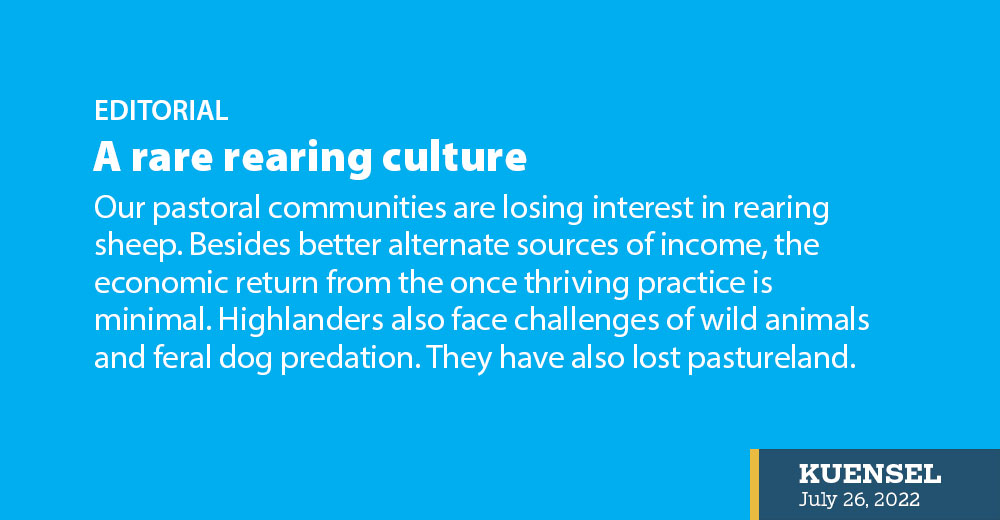Our pastoral communities are losing interest in rearing sheep. Besides better alternate sources of income, the economic return from the once thriving practice is minimal. Highlanders also face challenges of wild animals and feral dog predation. They have also lost pastureland.
Sheep rearing is a labourious and tiring job, but it has huge cultural and environmental importance. Woollen products were valuable and available even when our economy was small and closed. If it kept us warm, it was an important part of our culture and a source of pride.
Sheep have been known for making farming more dynamic. In places where chemical fertilizers were unknown, sheep manure ensured better harvest and yield. It contributed to the sustainability of a farm and farmers.
Now with easily available imported commodities, the practice of weaving woollen blankets and clothes is dying. Many communities have stopped rearing sheep. Those who are into the practice are also selling sheep to depend on imported or artificial materials.
Without intervention, sheep rearing practice could also disappear. We cannot afford it.
Understanding the sociocultural and biodiversity conservation aspects, there should be enabling policy and financial support to encourage highlanders to rear sheep and preserve a tradition that had been passed down for generations.
The agriculture ministry had already dedicated a centre for national highland research development. Research could focus on making sheep rearing practice more viable. There should be strategies that encourage sheep rearing into the highlander livelihood system.
Sheep dairy should be introduced and encouraged. Our farmers rear sheep only for wool, but sheep dairy products are popular in the global market. We hear stories of highlander groups in Phobjikha and Merak Sakteng trained to felt wool to make toys. They should be encouraged to use emerging markets in innovative ways. Value adding to sheep products could replace a lot of imported toys and handicraft items. We need not then sell scarves made from fake “baby yak” hair.
The highland programmes should not only focus on yaks, but could include other livestock. Sheep help in the diversification of farms, which make them more resilient in the face of climate change.
If we want to promote a harmonious and socioeconomically vibrant highland community, we have to include highlanders in all aspects of our developmental plans and activities. Making highlanders understand the importance of soft cultural values will bring better results.


